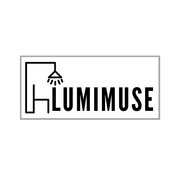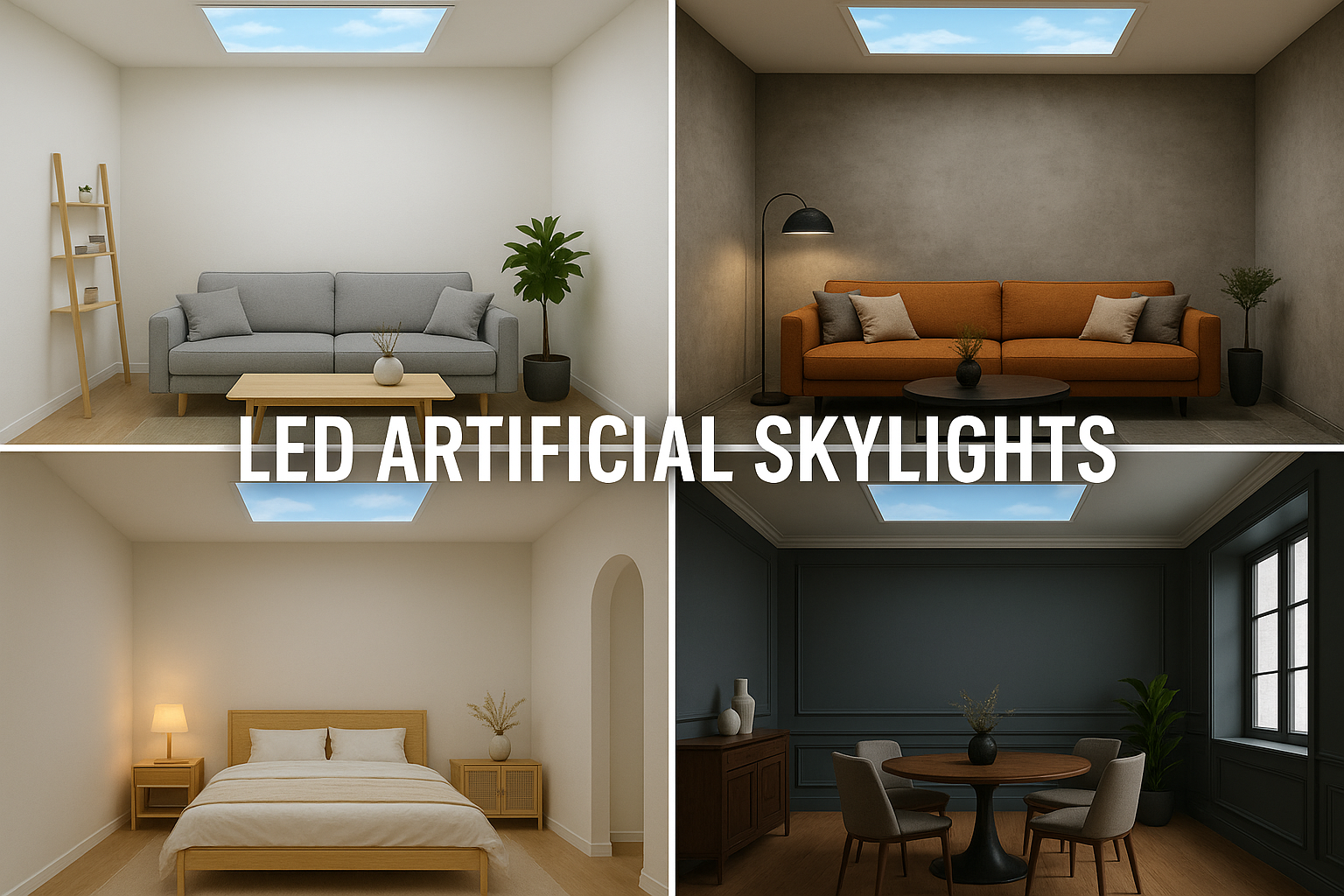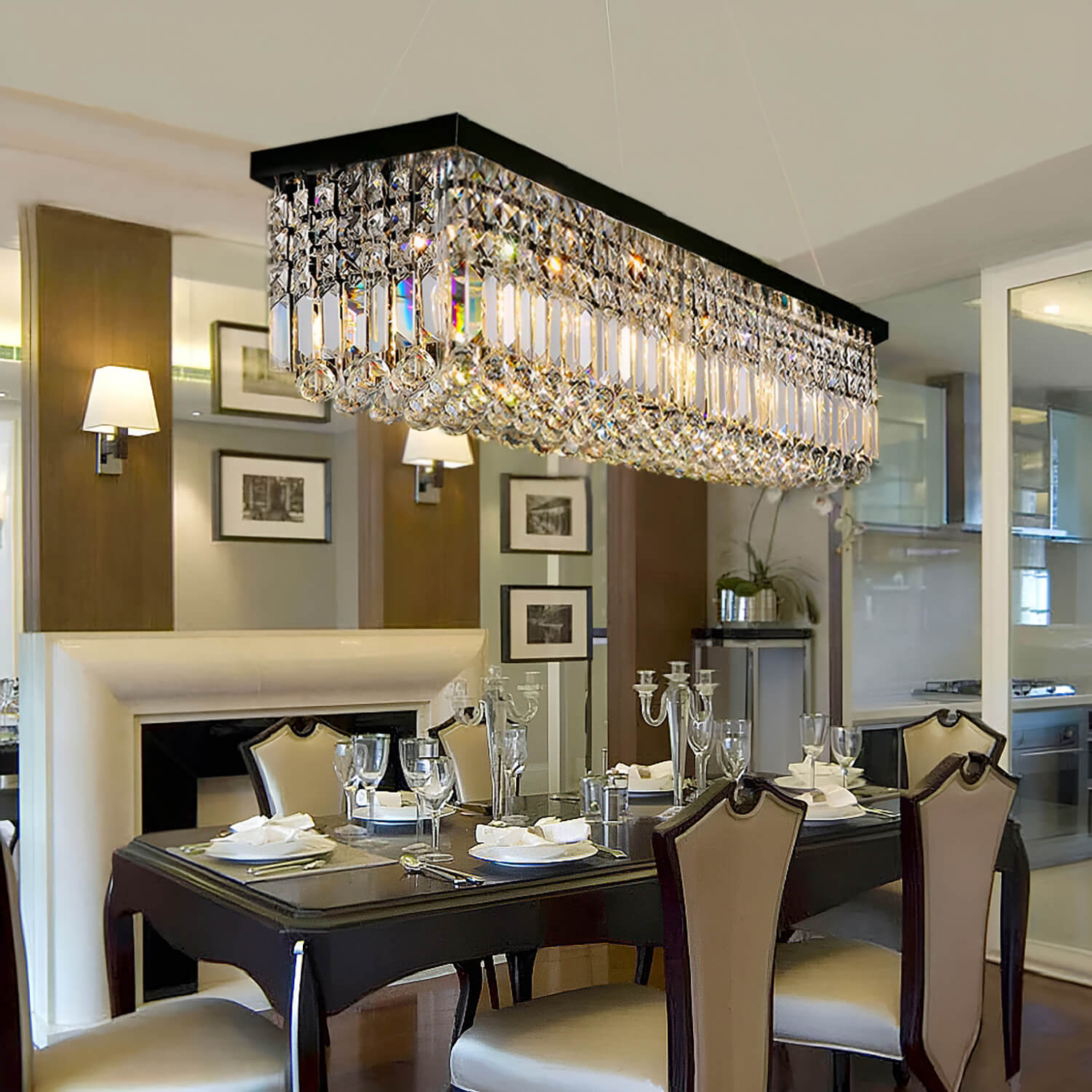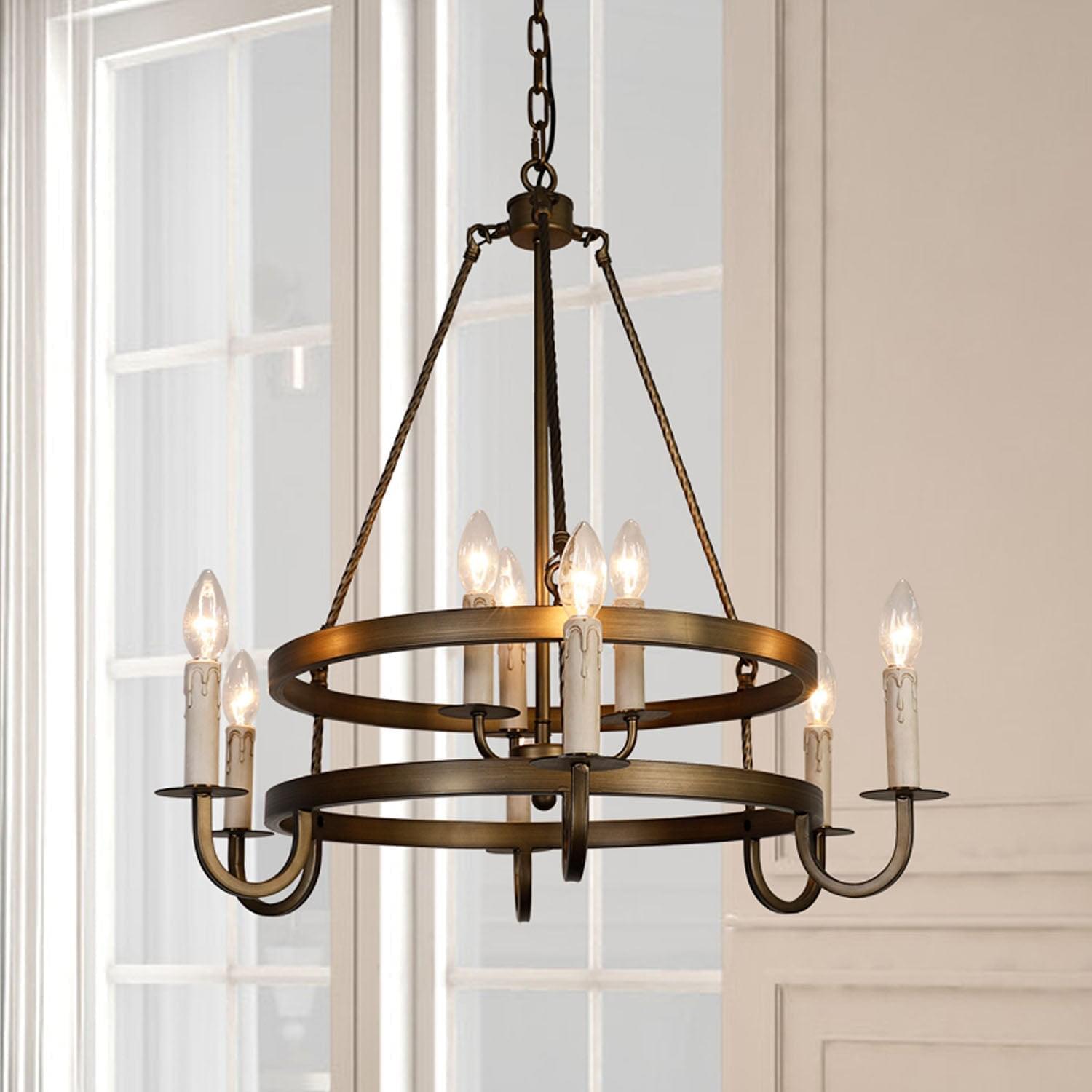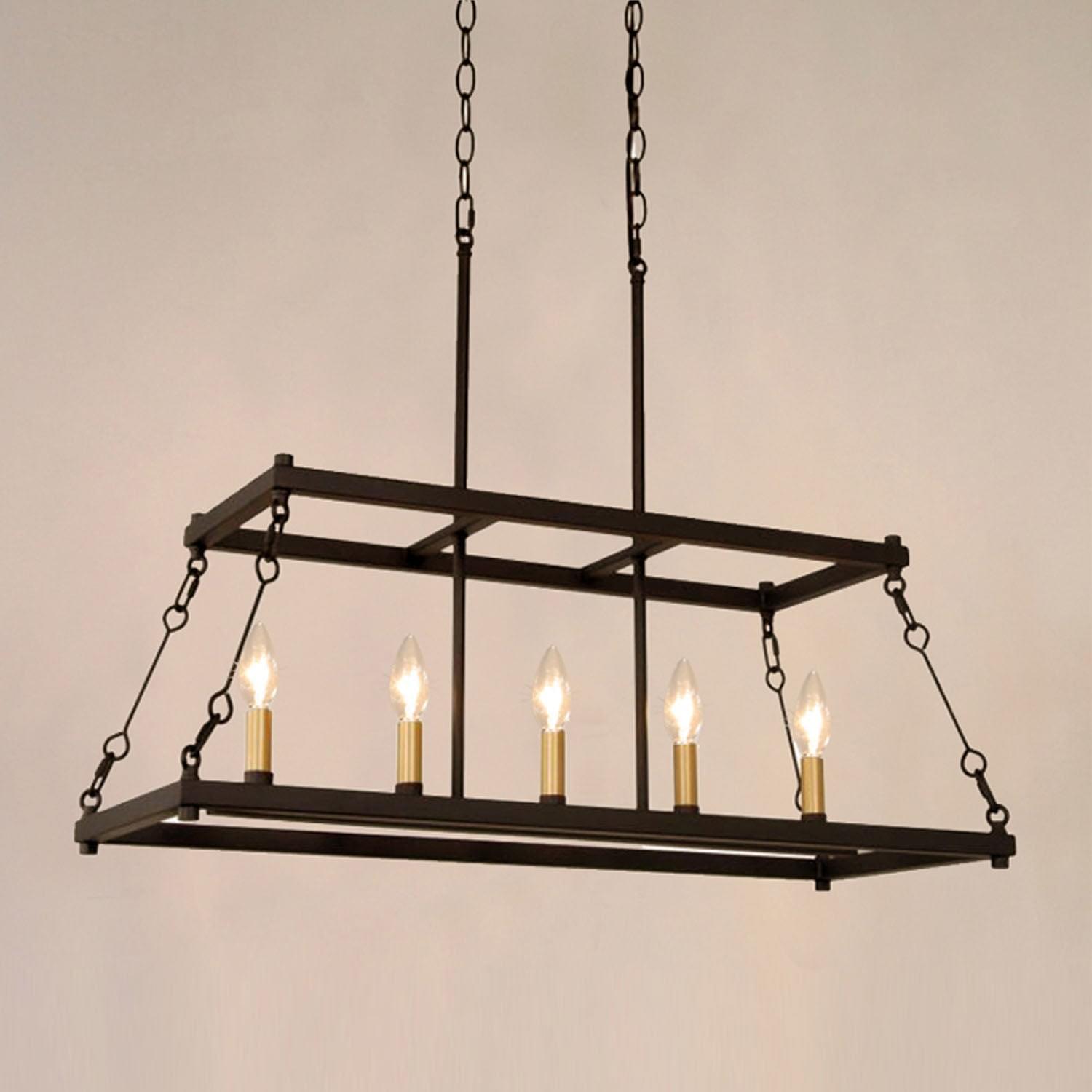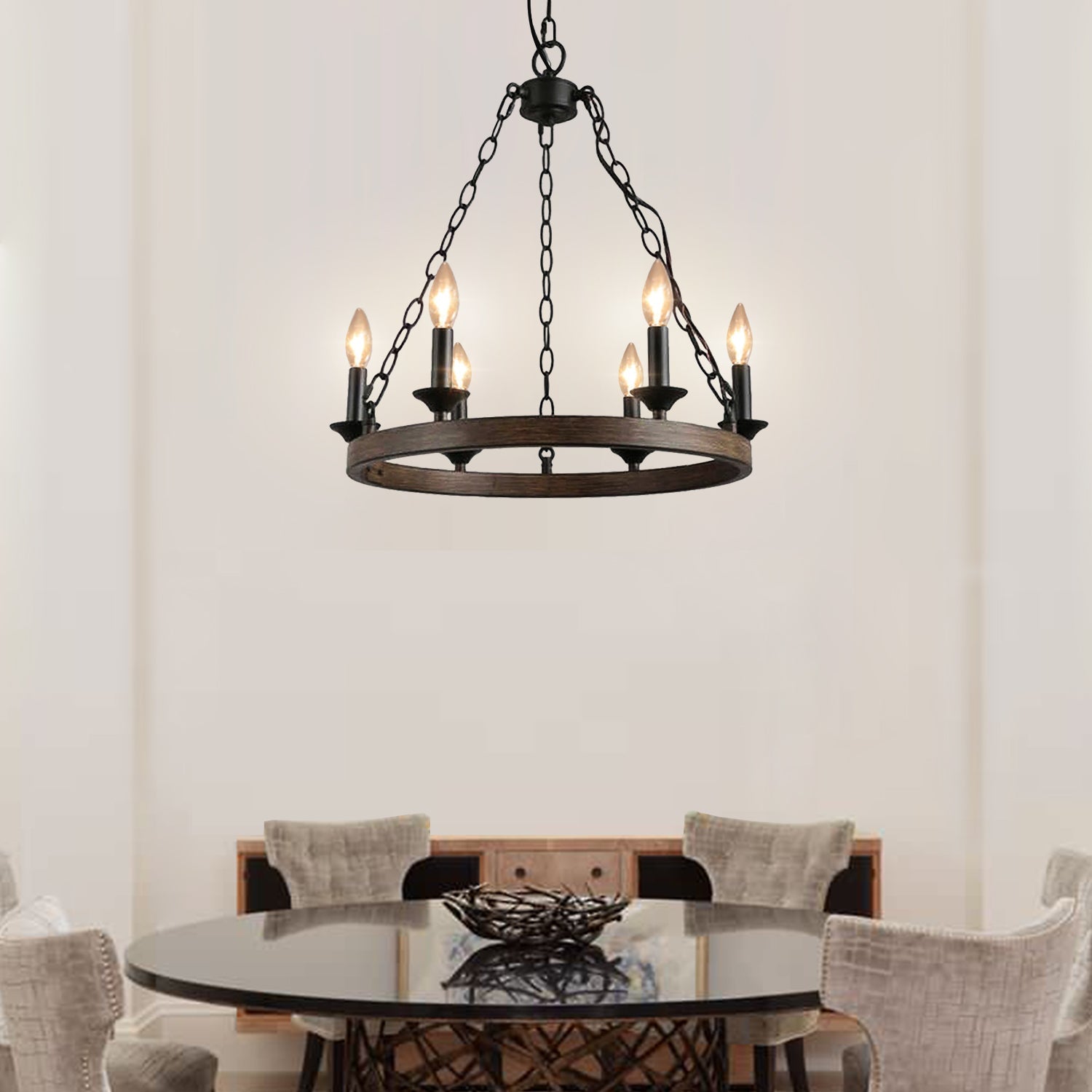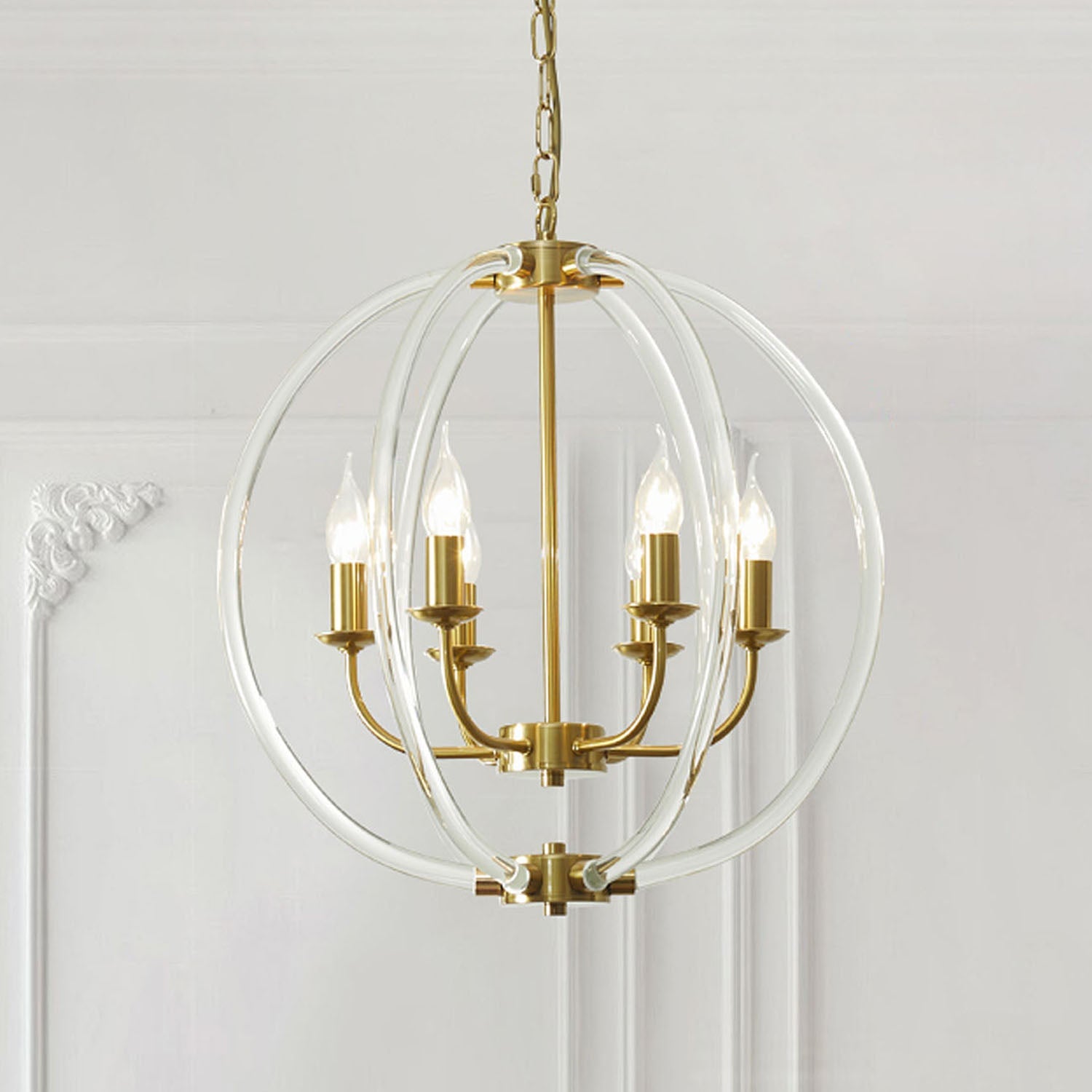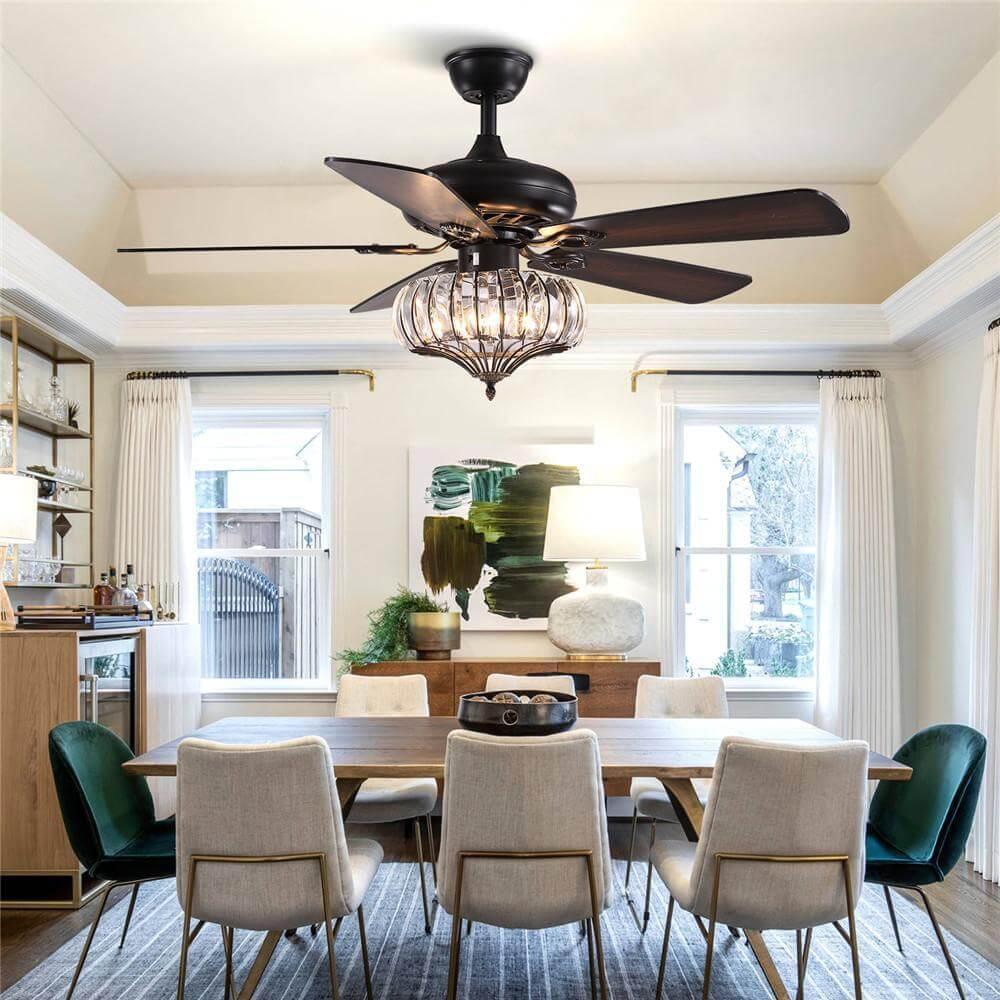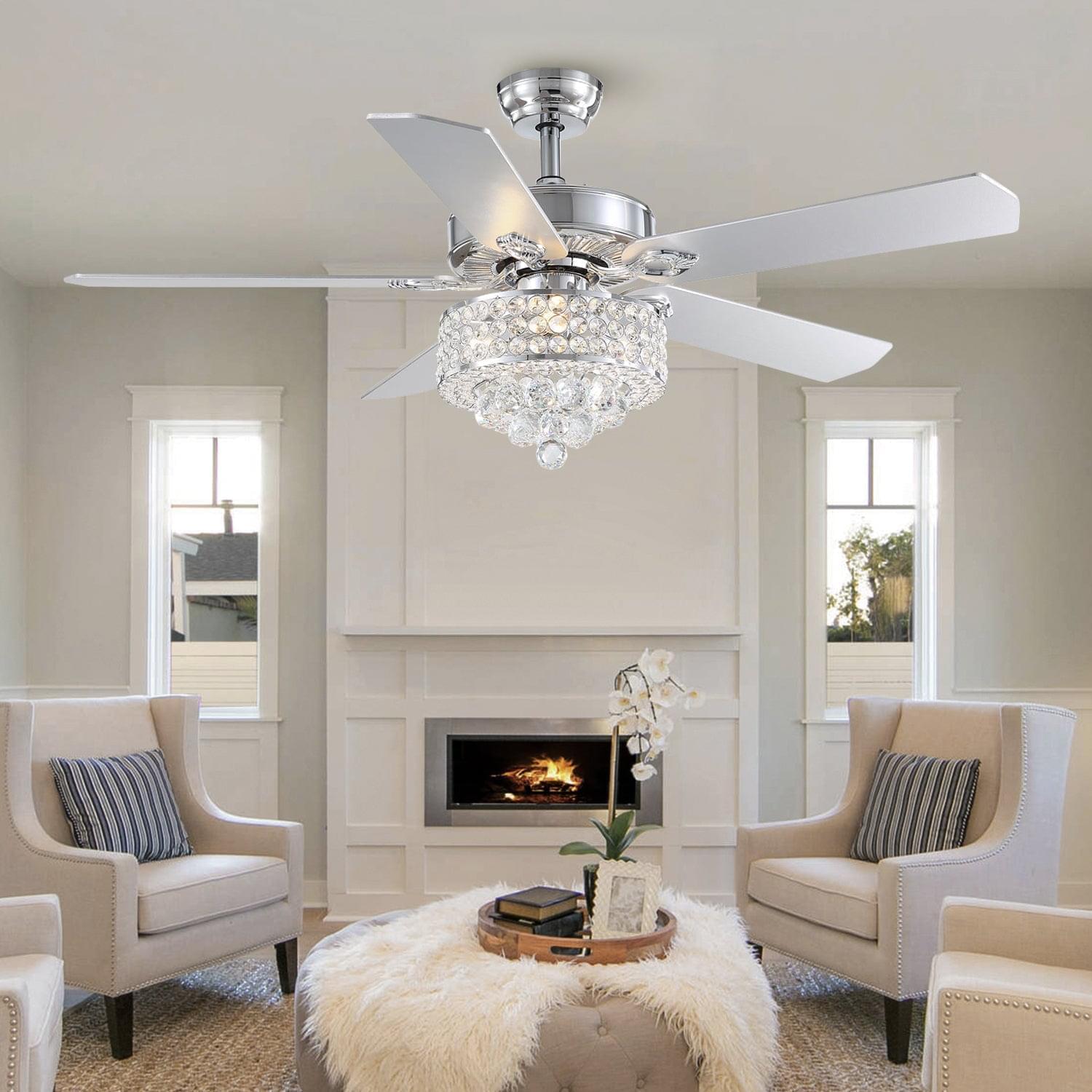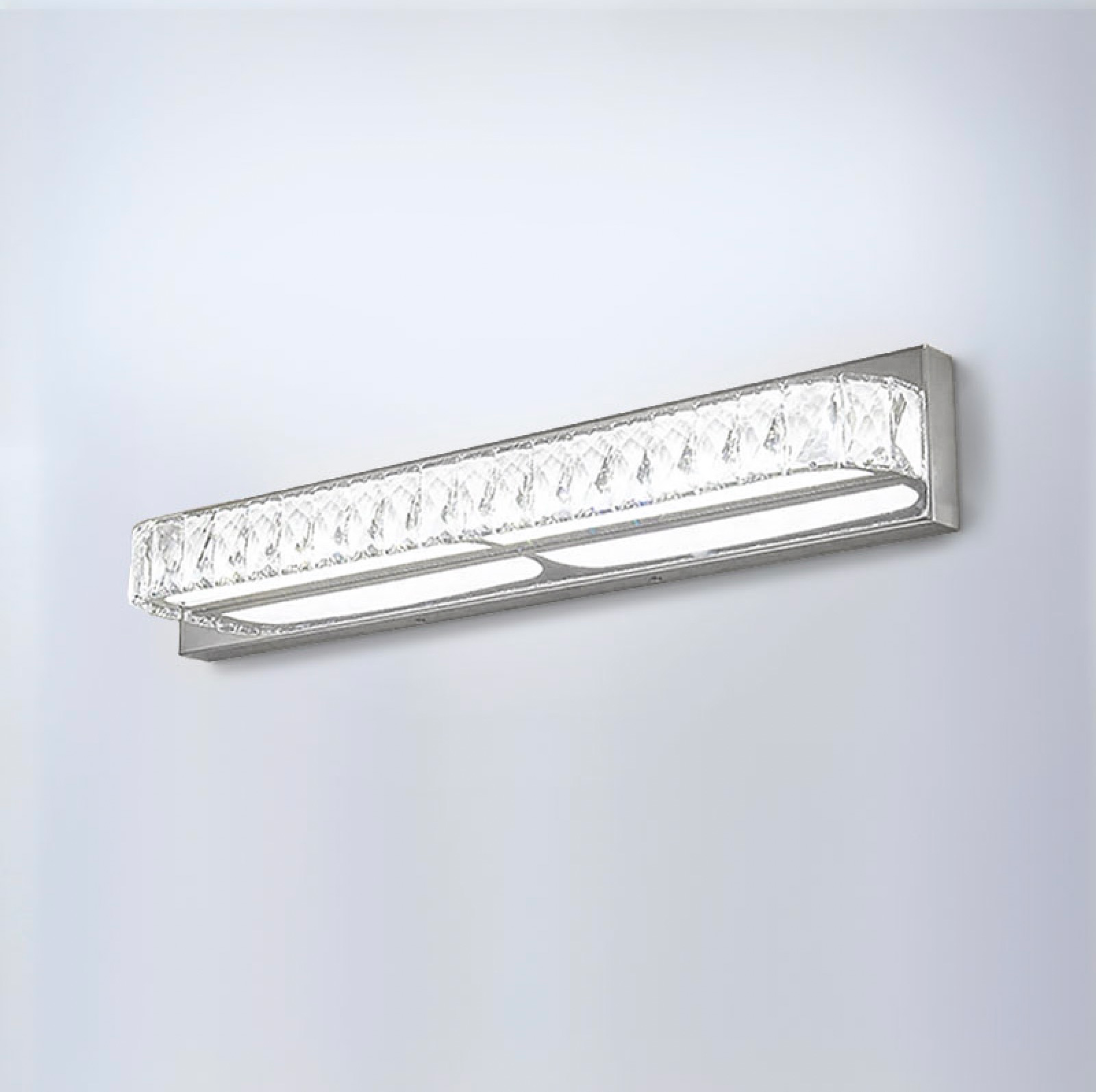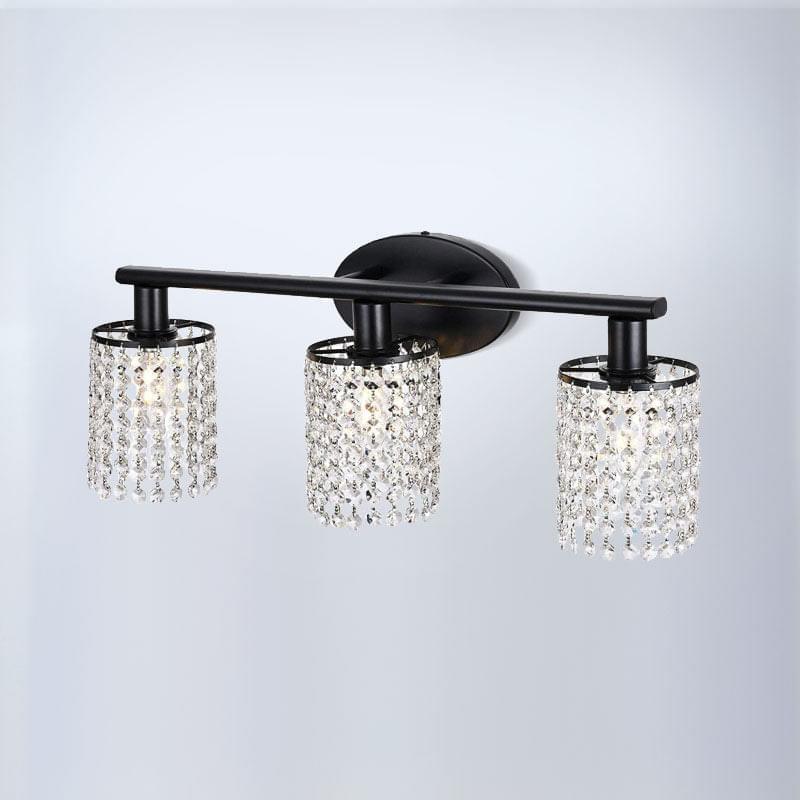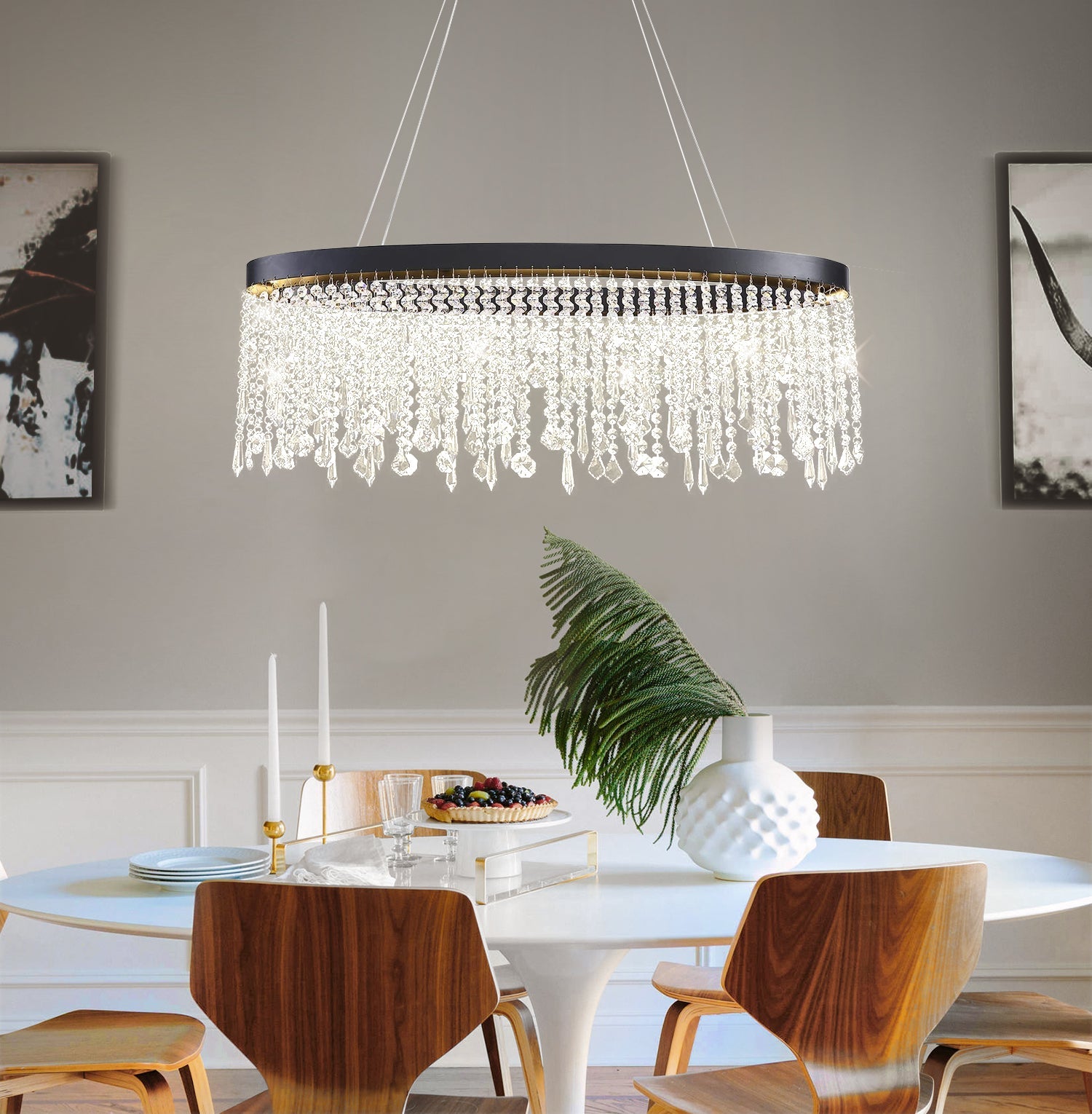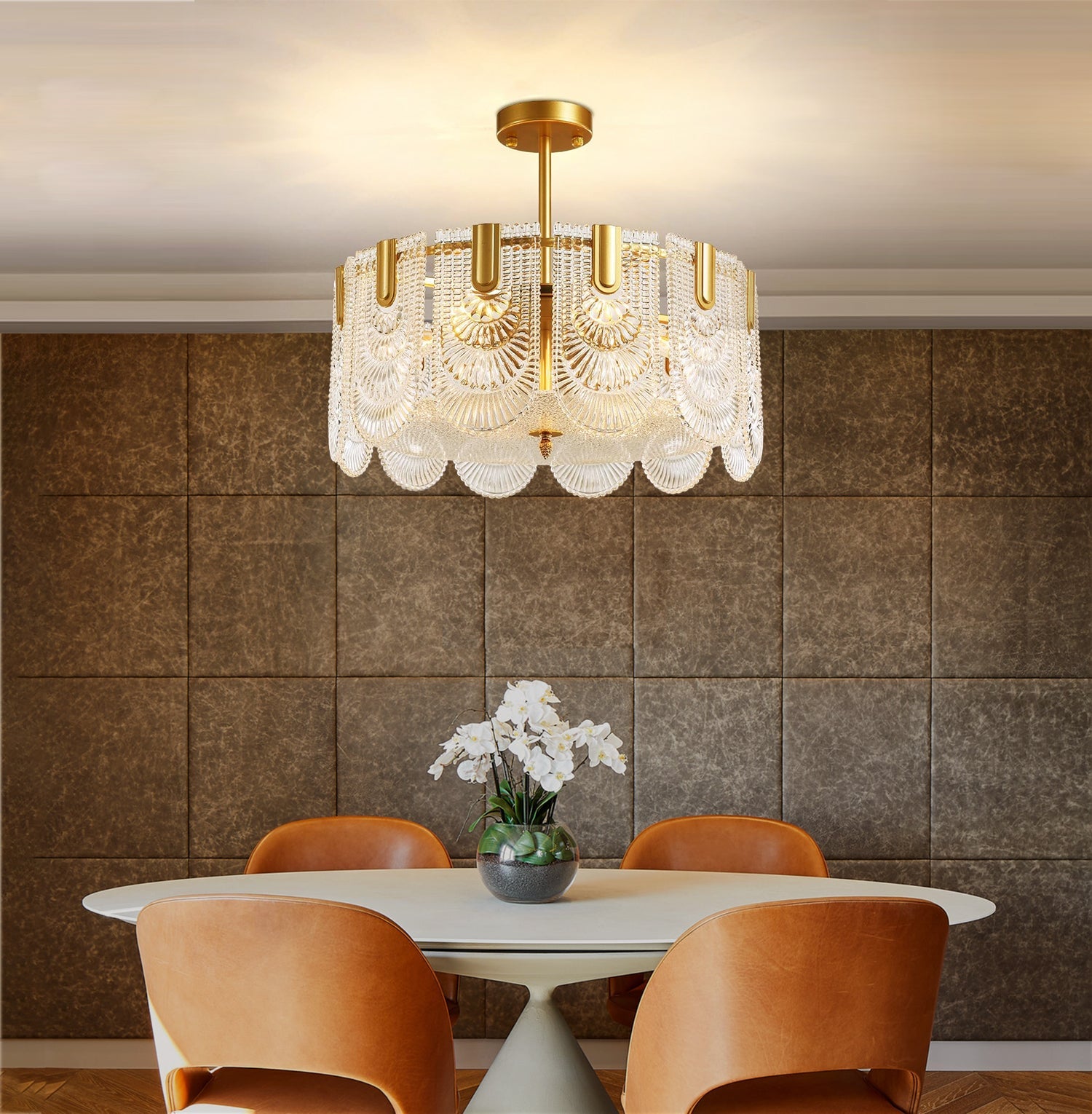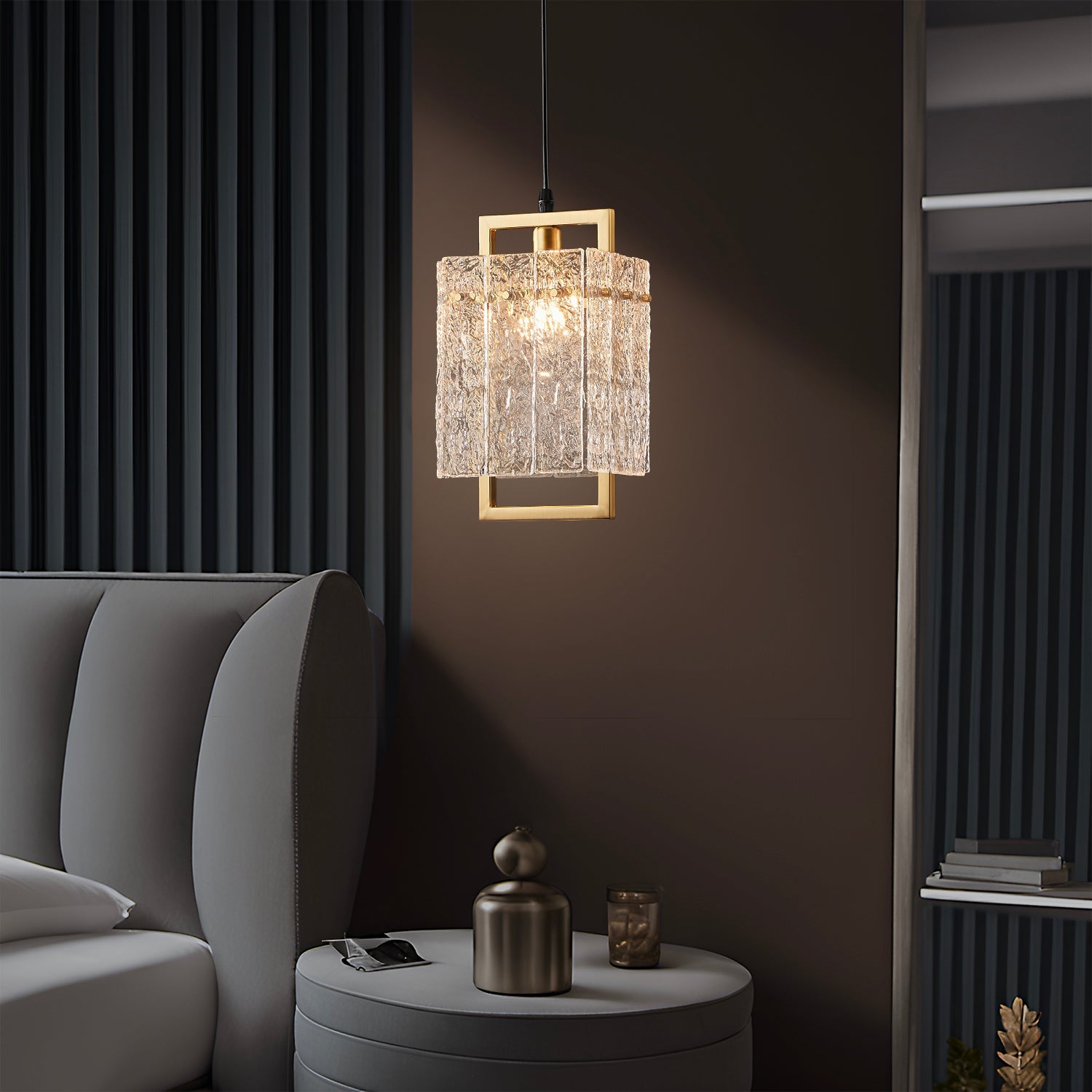In today's home design landscape, natural light is more valued than ever. However, not every space has the luxury of windows or traditional skylights. LED artificial skylights have emerged as a revolutionary solution, bringing the beauty of sunlight and blue skies indoors regardless of architectural constraints.
Did you know that studies show natural light can increase productivity by up to 40% and boost mood significantly? LED artificial skylights can replicate these benefits, with research indicating they can help reduce feelings of tension, anxiety, and claustrophobia when installed in windowless environments.
This comprehensive guide will walk you through how to seamlessly integrate these innovative lighting solutions with various decorating styles—from sleek modern minimalism to warm traditional aesthetics. We'll cover selection, installation techniques, and design principles to ensure your artificial skylights enhance rather than clash with your existing interior design.
Table of Contents
- Understanding LED Artificial Skylights
- LED Skylights in Modern Interior Design
- Blending with Traditional Décor
- Industrial Style Integration
- Minimalist Design Approaches
- Installation Solutions for Different Ceiling Types
- Color Temperature & Style Harmony
- Frequently Asked Questions
- Conclusion & Future Trends
1. Understanding LED Artificial Skylights
1.1 What Are LED Artificial Skylights?
LED artificial skylights are advanced lighting fixtures designed to mimic natural daylight and blue sky views. Unlike traditional skylights that require roof modifications, these systems use LED technology and specialized diffusion materials to create the illusion of natural light pouring in from above.
Modern LED skylights combine multiple technologies including:
- Advanced LED arrays – Providing the appropriate brightness and spectrum
- Rayleigh scattering technology – Creating the appearance of blue sky through light diffusion
- Smart controls – Allowing customization of intensity, color temperature, and even simulating daily sun cycles
- Optical elements – Producing the perception of depth and three-dimensionality
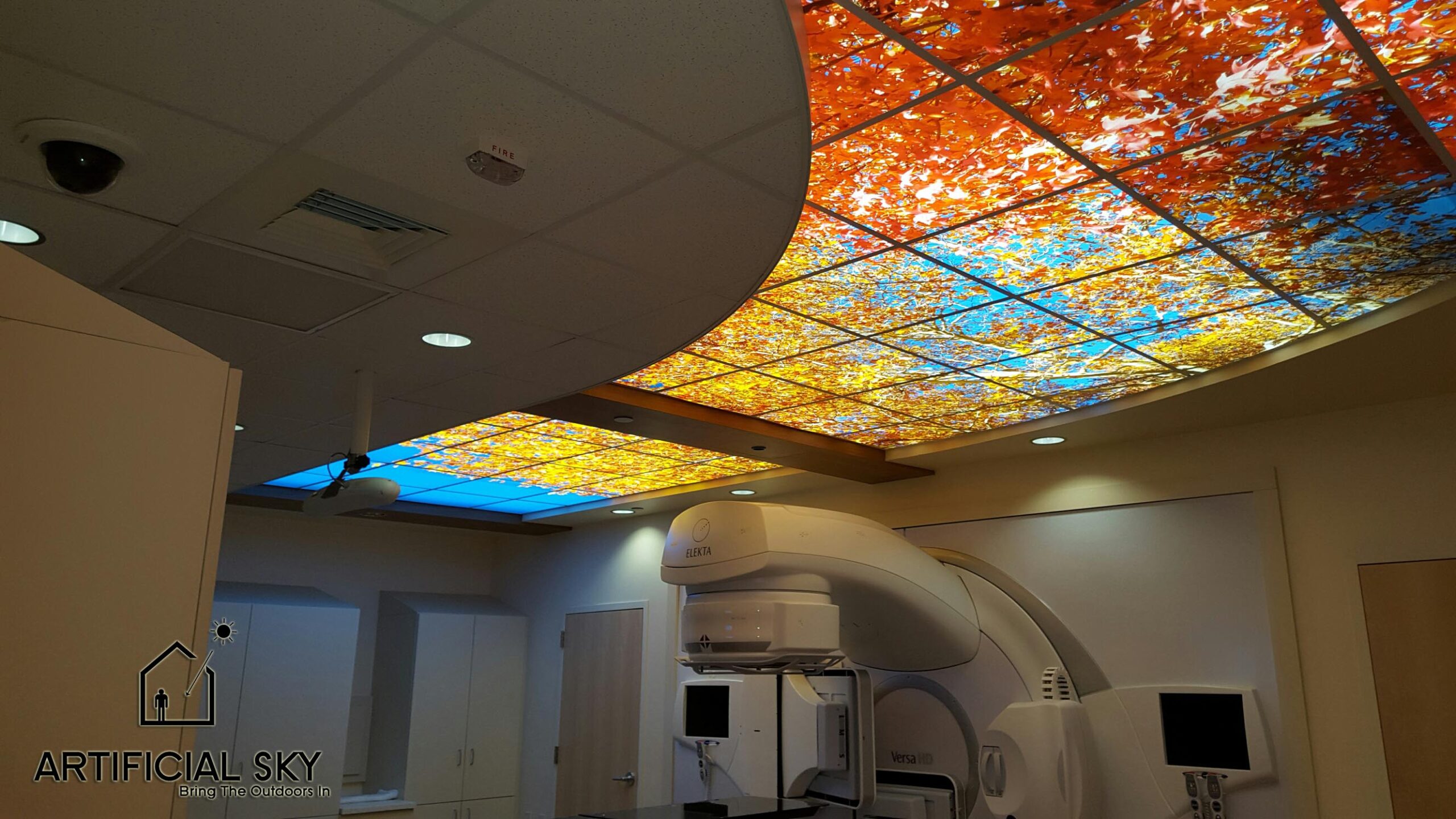
LED artificial skylight creating natural daylight effect in a clinical space
1.2 Types of LED Artificial Skylights
There are several varieties of LED artificial skylights available for different applications and ceiling types:
| Type | Description | Best For | Style Compatibility |
|---|---|---|---|
| Edge-Lit Panels | Slim profile panels with LEDs positioned at the edges; light is diffused across the surface | Drop ceilings, shallow recesses | Modern, Minimalist, Contemporary |
| Back-Lit Panels | LEDs positioned behind a diffusing material for a more even light distribution | Standard installations, larger areas | Versatile, works with most styles |
| 3D Effect Systems | Advanced optical systems creating depth and true sky simulation | Premium installations, focal points | Luxury modern, High-end traditional |
| RGB Tunable | Color-changing systems that can simulate different times of day | Dynamic spaces, entertainment areas | Contemporary, Eclectic, Modern |
"LED artificial skylights are not just lighting fixtures; they're architectural elements that completely transform how a space feels, bringing the outdoors in without structural modifications."
- Architectural Lighting Design Magazine, 2025
1.3 Benefits Beyond Aesthetics
While the primary appeal of artificial skylights is visual, their benefits extend far beyond mere decoration:
- Psychological wellbeing – Reduces claustrophobia and increases comfort in windowless spaces
- Energy efficiency – Modern LED technology uses significantly less power than traditional lighting
- Property value – Creates the illusion of architectural features that can increase home value
- Customization – Adjust brightness and color temperature to match mood or time of day
- Installation flexibility – Works where traditional skylights are impossible due to structural limitations
Pro Tip:
When selecting an artificial skylight, look for models with adjustable color temperature (measured in Kelvin). This allows you to match the light quality to your existing interior lighting and adjust throughout the day for a more natural effect.
2. LED Skylights in Modern Interior Design
2.1 Characteristics of Modern Design
Modern interior design is characterized by clean lines, minimalist aesthetics, and an emphasis on function and space. LED artificial skylights complement these elements perfectly by providing unobtrusive light sources that enhance the sense of openness without adding visual clutter.
Key features of modern design that work well with artificial skylights include:
- Neutral color palettes with accent colors
- Open floor plans and spacious layouts
- Geometric patterns and clean lines
- Emphasis on natural light and connection to outdoors
- Metal, glass, and concrete materials
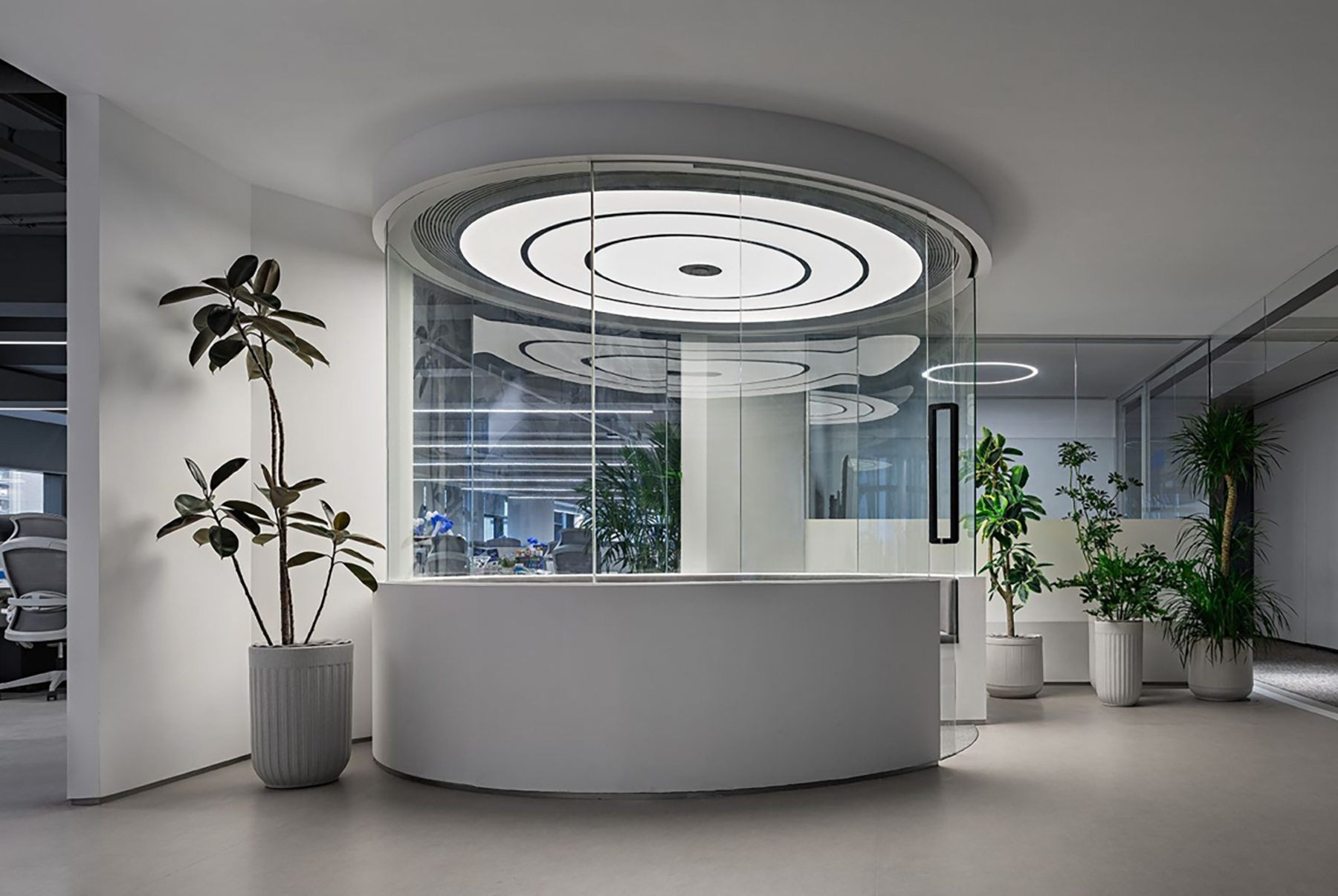
Artificial skylight harmoniously integrated into a modern office design
2.2 Best Artificial Skylight Styles for Modern Spaces
For modern interiors, certain artificial skylight styles work particularly well:
- Frameless recessed panels – These minimal designs sit flush with the ceiling, creating a seamless look that complements clean modern lines.
- Edge-lit square or rectangular panels – The geometric shapes align perfectly with modern design principles and provide even illumination.
- Smart LED systems – Programmable skylights that change throughout the day add a technological element that resonates with modern design sensibilities.
- Minimal trim options – When frames are necessary, choose slim aluminum or other metal finishes that complement modern hardware and fixtures.
Important Note:
In modern spaces, pay special attention to the color temperature of your LED skylight. Modern interiors typically benefit from cooler temperatures (5000K-6500K) during daytime hours to complement the clean aesthetic, with options to shift warmer in the evening.
2.3 Integration Tips for Modern Interiors
Consider these strategies when integrating artificial skylights in modern spaces:
- Align with architectural features – Position skylights in relation to key geometric elements in your design
- Create focal points – Use larger panels above seating areas or dining tables to create natural gathering points
- Consider ceiling height – In spaces with lower ceilings, more numerous smaller panels can prevent the ceiling from feeling oppressive
- Complement with downlights – Pair artificial skylights with strategic recessed lighting for balanced illumination
- Match hardware finishes – If your skylight has visible trim, coordinate its finish with other metal elements in the room
3. Blending with Traditional Décor
3.1 Traditional Design Elements
Traditional interior design celebrates classic elements, warm tones, and timeless patterns. While LED skylights may seem ultra-modern, they can be beautifully integrated into traditional spaces when done thoughtfully.
Key traditional design elements to consider when integrating artificial skylights:
- Rich, warm color palettes including burgundy, navy, green, and brown
- Ornate details and craftsmanship
- Symmetrical arrangements and balanced layouts
- Classic materials like wood, brass, and fabric
- Patterned textiles and detailed trim work
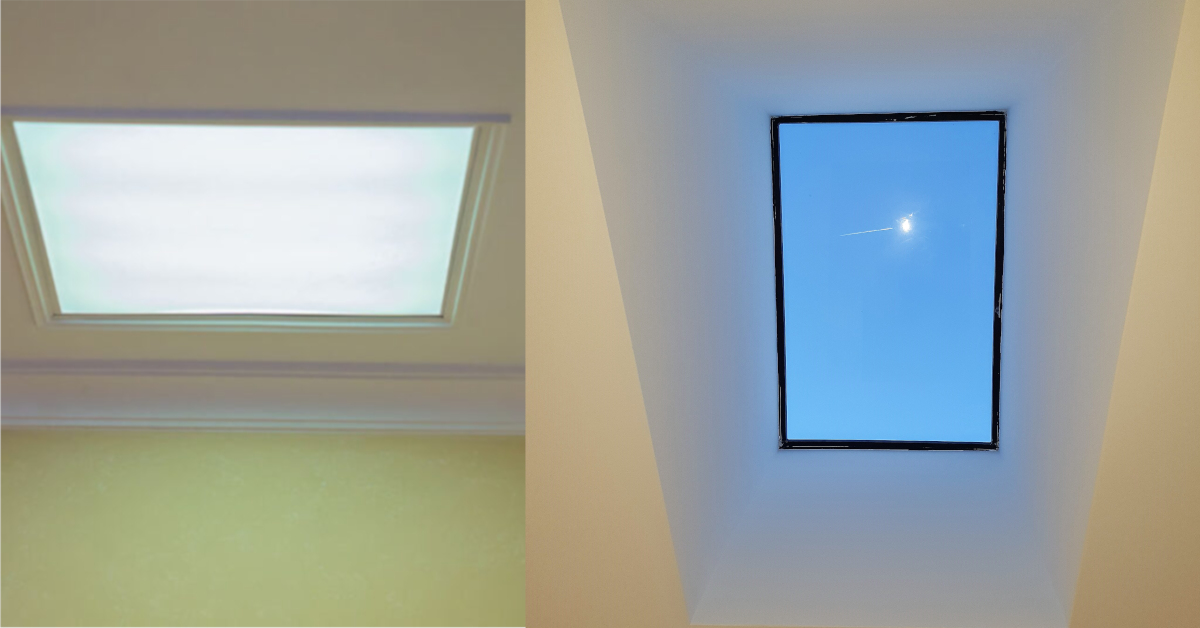
LED skylight blending with traditional interior elements
3.2 Adapting LED Skylights for Traditional Spaces
The key to successfully incorporating artificial skylights into traditional interiors lies in thoughtful adaptation:
| Traditional Element | LED Skylight Adaptation |
|---|---|
| Ornate crown molding | Use skylights with decorative trim options or create custom molding frames |
| Warm color palette | Select warmer color temperatures (2700K-3500K) to complement traditional woods and fabrics |
| Symmetrical arrangements | Install multiple smaller panels in balanced patterns rather than one large panel |
| Classic lighting fixtures | Blend artificial skylights with traditional chandeliers, ensuring complementary light temperatures |
| Detailed ceiling treatments | Incorporate panels within coffered or tray ceiling designs |
Unlike in modern spaces, traditional rooms benefit from artificial skylights with more defined borders or frames that reference architectural elements like transom windows or classic skylights.
Pro Tip:
For the most authentic look in traditional settings, consider LED skylights that simulate aged glass or feature subtle detailing that echoes historical skylight designs. Some manufacturers offer customizable frames that can be painted or stained to match existing woodwork.
3.3 Case Study: Victorian Home Renovation
A recent renovation of a Victorian-era home in Boston demonstrates how LED artificial skylights can enhance traditional spaces:
The designers faced the challenge of brightening a grand stairwell without compromising the home's historic character. They selected a rectangular LED skylight with a custom-designed border that matched the home's original woodwork. The light temperature was set to a warm 3200K to complement the amber tones of the wood paneling.
The result was a seemingly authentic period skylight that provided much-needed illumination while preserving and even enhancing the traditional aesthetic of the space. The homeowners reported the space felt both authentic and significantly more inviting.
Read reviews of top virtual skylight brands for traditional homes"The challenge with traditional spaces isn't hiding the technology—it's making the technology feel like it could have always been there. With the right framing and finish choices, LED skylights can look like they've been part of the architecture for a century."
- Historical Home Renovation Specialist
4. Industrial Style Integration
4.1 Industrial Design Characteristics
Industrial style celebrates raw, utilitarian elements with an emphasis on exposed materials, open spaces, and functional aesthetics. LED artificial skylights can provide a striking contrast while enhancing the spacious feeling industrial design strives to achieve.
Key industrial design elements include:
- Exposed structural elements like beams, pipes, and ductwork
- Raw materials including concrete, metal, brick, and reclaimed wood
- Neutral color schemes with hints of rust, copper, and factory-inspired tones
- Open floor plans with minimal interior walls
- Vintage and salvaged items repurposed as decor

Artificial skylight creating contrast in an industrial-inspired space
4.2 Creating Industrial-LED Skylight Harmony
Industrial spaces offer unique opportunities for dramatic skylight installations that enhance rather than hide the structural elements of the space:
- Exposed framework installations – Unlike other styles where the mechanical aspects of skylights are concealed, industrial designs can incorporate visible mounting systems as part of the aesthetic.
- Metal-framed panels – Choose skylights with black steel, aluminum, or copper-toned frames that echo other metal elements in the space.
- Grid arrangements – Multiple panels arranged in a grid pattern can reference factory window designs while providing even illumination across large spaces.
- Contrast lighting – The bright, clean light from artificial skylights creates a compelling contrast against darker industrial materials like brick and steel.
Important Note:
Industrial spaces often feature higher ceilings and larger volumes, requiring careful consideration of light output. Ensure your selected artificial skylights provide sufficient brightness for the space—you may need higher output models than would be required in smaller rooms with standard ceiling heights.
4.3 Innovative Applications in Industrial Settings
Industrial design allows for creative applications beyond standard ceiling installations:
- Between exposed ceiling joists – Place panels between structural elements rather than cutting through them
- Suspended installations – Hang panels below the ceiling plane as design elements in their own right
- Multi-level effect – Create the illusion of light wells by recessing panels at different depths
- Integrated with ventilation – Place panels near but not interfering with exposed ductwork for a cohesive industrial look
Pros of LED Skylights in Industrial Spaces
- Creates dramatic contrast effects
- Softens often hard or severe industrial materials
- Improves functionality of workspaces
- Can highlight architectural features
- Works well with high ceilings common in industrial designs
Challenges to Consider
- Larger spaces require more powerful systems
- Dust accumulation may be more visible in bright skylight
- Installation may be complex with exposed structural elements
- Light reflection on metal surfaces must be managed
- Balancing with other industrial lighting fixtures
For industrial spaces, consider these LED artificial skylight features:
- Higher brightness output (minimum 4000 lumens for larger areas)
- Cool white light temperature (4000K-5000K)
- Durable construction that complements industrial materials
- Weather-resistant options for converted warehouse spaces that may have temperature fluctuations
5. Minimalist Design Approaches
5.1 Minimalist Design Principles
Minimalist design embodies the philosophy that "less is more," focusing on simplicity, clean lines, and essential elements. This aesthetic pairs exceptionally well with LED artificial skylights, which can provide ambient illumination without adding visual clutter.
Key minimalist design principles include:
- Reduction to essentials – Eliminating unnecessary elements
- Monochromatic or limited color palettes – Often whites, blacks, and neutrals
- Open, uncluttered spaces – Emphasis on negative space
- Quality over quantity – Few but carefully selected pieces
- Hidden storage solutions – Keeping surfaces clear and clean
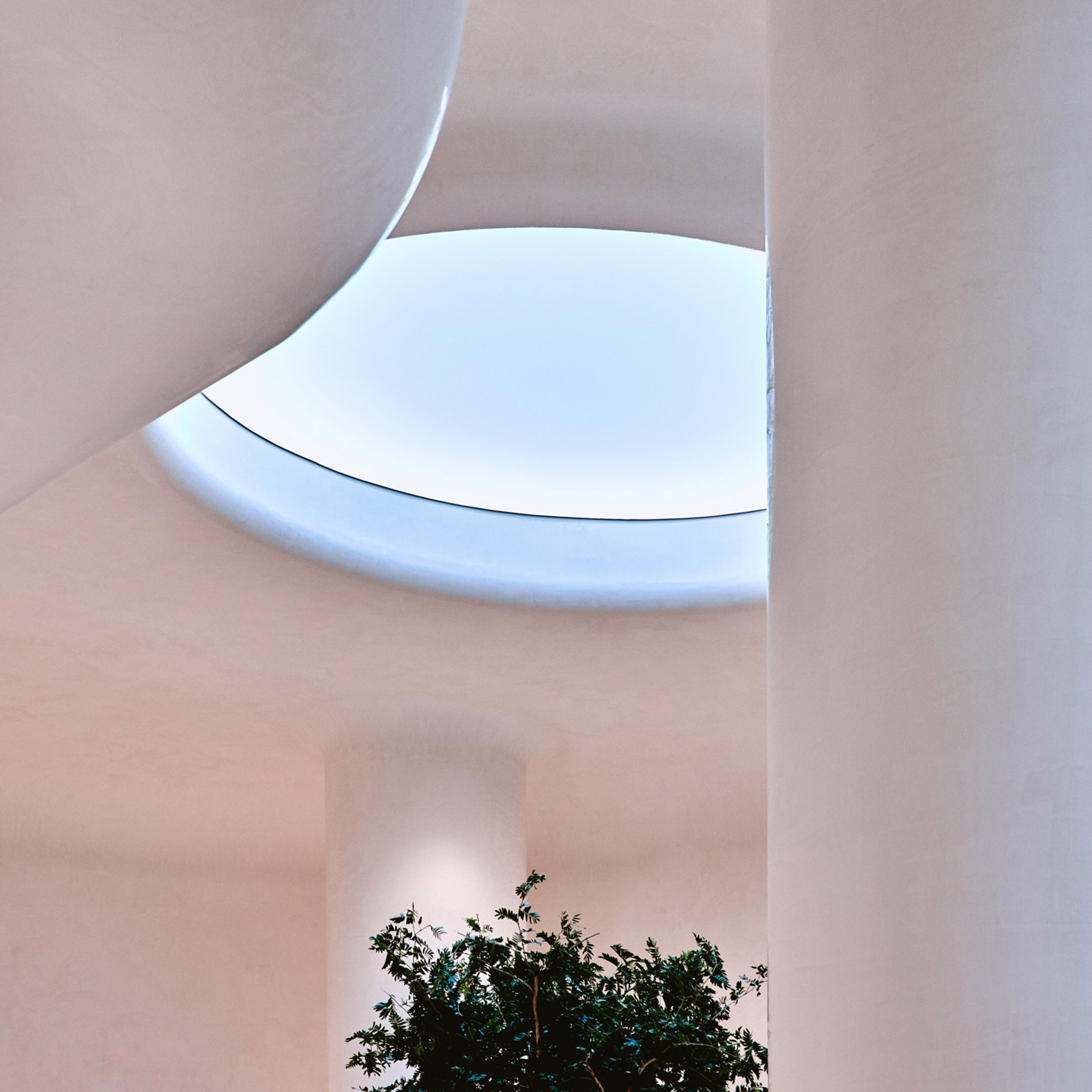
Clean minimalist space enhanced by artificial skylight illumination
5.2 Seamless Integration Techniques
In minimalist designs, the goal is to make artificial skylights appear as integrated and unobtrusive as possible:
- Flush-mounted installations – The ideal minimalist skylight sits perfectly flush with the ceiling surface, with minimal or invisible frames.
- Recessed lighting wells – Create a simple recessed area that gives the artificial skylight depth without ornate details.
- Streamlined controls – Opt for wireless or hidden control systems rather than visible switches or panels.
- Geometric simplicity – Choose square, rectangular, or circular panels with clean edges.
Pro Tip:
For the most minimalist look, consider recessing your artificial skylight slightly deeper into the ceiling and extending the drywall into the recess with a simple angled cut. This creates a clean light well effect without adding decorative elements while also hiding the edges of the panel.
5.3 Light as a Minimalist Design Element
In minimalist design, light itself becomes a crucial design element. Artificial skylights serve not just as illumination but as a way to add interest without introducing physical objects:
- Create shadow play – Position skylights to cast interesting shadows that add subtle texture
- Highlight selected features – Use directed light to draw attention to key architectural elements
- Define zones – Place panels strategically to delineate functional areas without physical dividers
- Add perceived depth – Artificial skylights create the illusion of space extending beyond the ceiling
"In minimalist design, we treat light as material. An artificial skylight becomes not just a fixture but a careful manipulation of space through illumination—it's about what you see, not what you touch."
- Contemporary Minimalist Designer
Ideal LED Skylight Specifications for Minimalist Spaces:
- Edge-to-edge diffuser with no visible frame
- High CRI (Color Rendering Index) minimum 90+
- Clean white light (4000K-5000K) for most minimalist aesthetics
- Dimmable functionality through smart controllers
- Simple geometric shapes that align with room proportions
6. Installation Solutions for Different Ceiling Types
6.1 Drywall Ceiling Installation
Drywall (gypsum board) ceilings are the most common type in residential spaces and offer good flexibility for artificial skylight installation.
Installation approach:
- Determine the desired location, avoiding ceiling joists and electrical wiring
- Cut an appropriately sized opening using a drywall saw or rotary tool
- Install mounting brackets or frame according to the manufacturer's specifications
- Run electrical wiring through the ceiling to a junction box (following local electrical codes)
- Mount the LED panel securely in the opening
- Apply finishing trim if required by your design aesthetic

Installation process for LED panel light in a drywall ceiling
Important Note:
Always verify the space above your drywall ceiling before cutting. Ensure adequate clearance for the fixture depth and check for obstructions like HVAC ducts, plumbing, or electrical wiring. Most LED artificial skylights require at least 3-6 inches of clearance above the ceiling.
6.2 Suspended/Drop Ceiling Solutions
Suspended ceilings with removable tiles offer perhaps the easiest installation process for artificial skylights.
Installation approach:
- Remove the ceiling tile from the desired location
- Select an artificial skylight designed to fit standard grid sizes (typically 2'×2' or 2'×4')
- Connect the electrical wiring above the suspended ceiling
- Lower the panel into place in the grid system
- Secure per manufacturer's instructions (typically with safety wires)
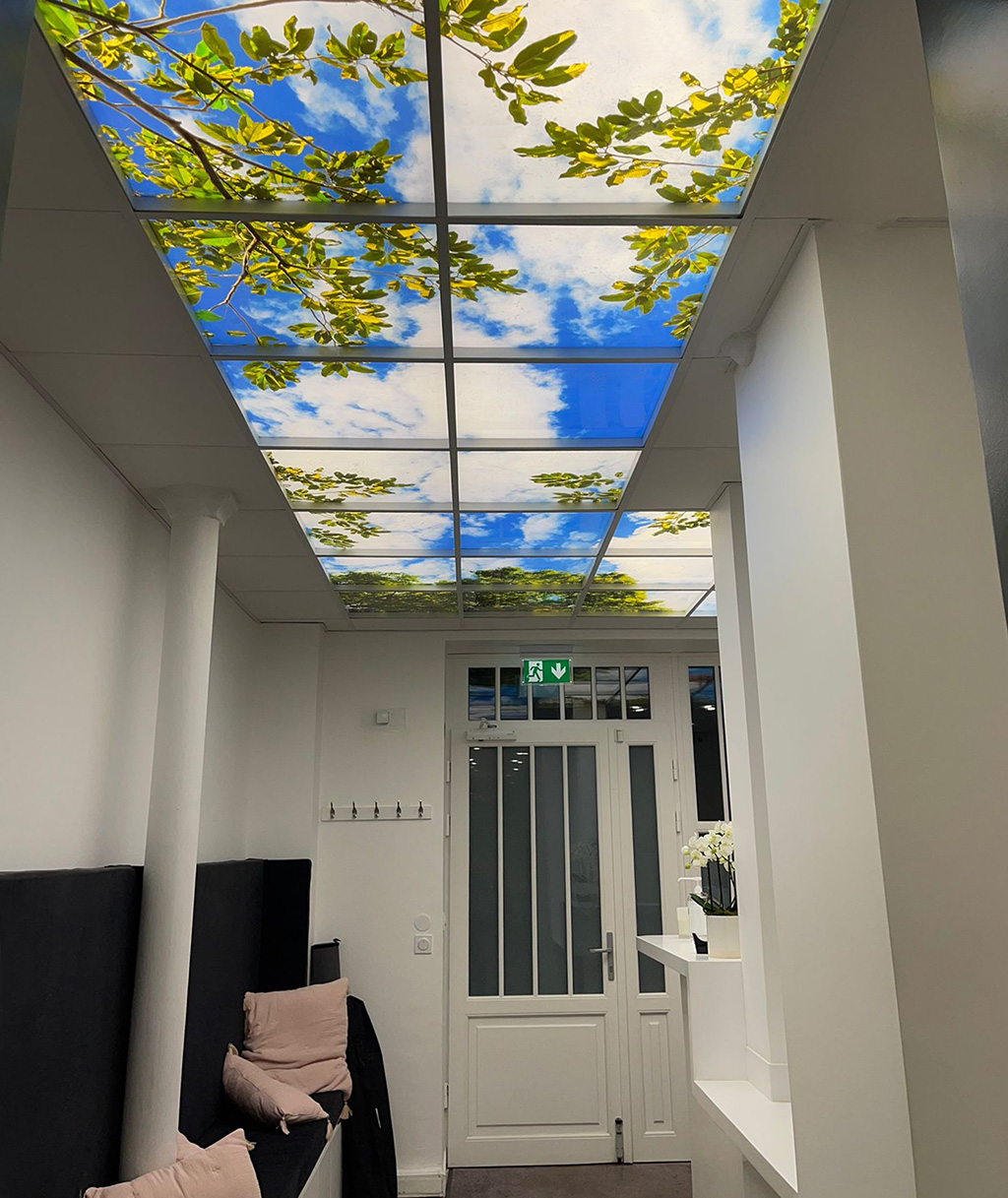
LED skylight panel integrated into a standard suspended ceiling grid
Pro Tip:
For the most realistic effect in suspended ceilings, consider using multiple adjacent tiles to create a larger artificial skylight. This helps overcome the grid pattern of the ceiling and creates a more convincing illusion of a real skylight above.
6.3 Concrete Ceiling Challenges
Concrete ceilings present the most significant installation challenge but can still accommodate artificial skylights with the right approach.
Installation options:
- Surface mounting – Use special surface-mount kits that attach directly to the concrete surface without recessing.
- Drop ceiling conversion – Install a partial drop ceiling system in the area where you want the artificial skylight.
- Suspended light boxes – Create custom-built light boxes that hang below the ceiling and contain the artificial skylight panels.
- Light wells – Build a drywall structure that extends down from the concrete ceiling to house the artificial skylight.
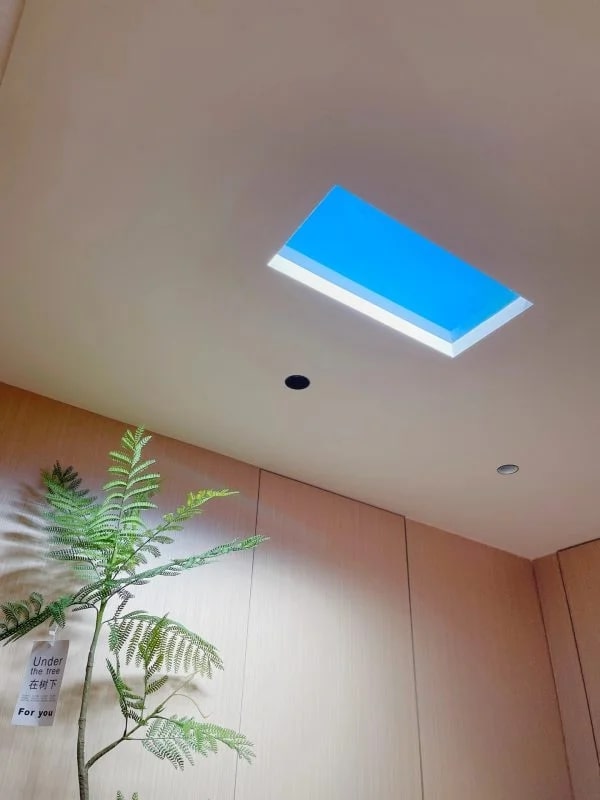
Surface-mounted artificial skylight suitable for concrete ceiling installation
Important Note:
Concrete ceiling installations usually require professional assistance, as they involve securing mounting hardware to concrete using specialized fasteners and may require more complex electrical work. Always consult with a professional electrician and check local building codes before proceeding.
6.4 Universal Installation Considerations
Regardless of ceiling type, these factors should always be considered:
- Electrical requirements – Most LED skylights require 120-277V connections
- Weight support – Ensure the ceiling structure can support the weight of the fixture
- Heat dissipation – Allow adequate ventilation around LED drivers
- Access for maintenance – Consider how you'll access the fixture for eventual LED replacement
- Water hazards – Be cautious installing in bathrooms or areas with moisture
Watch this helpful installation guide:
This video from ToolboxDIY demonstrates the process of installing surface-mounted LED panel lights:
7. Color Temperature & Style Harmony
7.1 Understanding Color Temperature
Color temperature is measured in Kelvin (K) and determines whether light appears warm (yellowish) or cool (bluish). Selecting the right temperature for your artificial skylight is crucial to achieving harmony with your interior design style.
Common color temperature ranges:
- Warm White (2700K-3000K) – Yellowish light similar to traditional incandescent bulbs
- Neutral White (3500K-4000K) – Balanced light with minimal color cast
- Cool White (4000K-5000K) – Crisp, slightly bluish light similar to noon daylight
- Daylight (5000K-6500K) – Bluish light that mimics clear blue sky conditions

Smart LED skylight with adjustable color temperature settings
7.2 Matching Temperature to Design Style
Different interior design styles are enhanced by specific color temperatures:
| Design Style | Recommended Temperature Range | Reasoning |
|---|---|---|
| Modern/Contemporary | 4000K-5000K (Cool White to Daylight) | Complements clean lines and often cool color palettes |
| Traditional | 2700K-3500K (Warm to Neutral) | Enhances warm woods and classic materials |
| Industrial | 4000K-6500K (Cool White to Bright Daylight) | Creates contrast with raw materials and references factory lighting |
| Minimalist | 4000K-5000K (Cool White) | Provides clean, neutral illumination that doesn't interfere with simple aesthetic |
| Scandinavian | 4000K-5000K (Cool White) | Replicates Nordic sunlight quality and brightens light color schemes |
| Bohemian/Eclectic | 3000K-4000K (Warm to Neutral) | Balances colorful decor without adding competing color cast |
| Coastal/Beach | 5000K-6500K (Daylight) | Mimics sunny beach light quality and enhances blues and whites |
Pro Tip:
For the most versatile solution, consider investing in color-tunable LED skylights that allow you to adjust the temperature throughout the day or as your design preferences evolve. Many smart models offer preset scenes that simulate dawn, midday, and sunset.
7.3 Dynamic Lighting Strategies
Beyond static color temperatures, consider how changing light can enhance your interior design:
- Daily cycles – Program skylights to shift from warmer morning light to cooler midday and back to warm evening tones
- Seasonal adjustments – Brighter, cooler settings in winter to combat seasonal affective disorder
- Scene setting – Create preset lighting scenes for different activities or moods
- Integration with smart home systems – Coordinate skylight color with other lighting fixtures
Consider these factors when selecting the perfect color temperature:
- Room orientation (north-facing rooms benefit from warmer light)
- Ceiling height (higher ceilings may require brighter, cooler light)
- Primary room usage (task-oriented spaces vs. relaxation areas)
- Existing light fixtures (aim for complementary temperatures)
- Wall and furniture colors (light temperature can enhance or diminish certain colors)
"The mark of truly successful artificial skylight integration isn't just how it looks when you're looking at it—it's how it makes the entire space feel. The right color temperature is what transforms a light fixture into an architectural element."
- Interior Lighting Designer
8. Frequently Asked Questions
How much do LED artificial skylights cost compared to real skylights?
LED artificial skylights typically range from $200-$3,000 depending on size, features, and quality, with premium 3D effect systems reaching $5,000+. This is considerably less than traditional skylights, which average $1,500-$7,300 for installation and often require structural modifications. Additionally, artificial skylights eliminate weather-related concerns such as leaks and heat loss.
How realistic do LED artificial skylights look?
Quality varies significantly between products. Basic panel lights provide even illumination but may not create a convincing sky illusion. Premium systems use advanced diffusion technology, depth effects, and proprietary optical systems to create remarkably realistic blue sky and sunlight effects that can fool the eye from normal viewing distances. The most advanced systems include simulated sun positioning and dynamic cloud effects.
Can I install an LED artificial skylight myself?
Installation difficulty depends on your ceiling type and electrical experience. Simple surface-mount installations or replacing ceiling tiles in suspended systems can be DIY-friendly. However, recessed installations in drywall or concrete ceilings typically require professional assistance due to electrical work and structural considerations. Always check local building codes and electrical safety requirements before attempting installation yourself.
How long do LED artificial skylights last?
Quality LED skylights typically have a rated lifespan of 50,000 to 100,000 hours of operation. This translates to approximately 17-35 years if used 8 hours daily. However, the LED driver (power supply) may need replacement before the LEDs themselves fail. Most manufacturers offer warranties of 3-5 years, with premium systems extending to 10 years.
Can LED artificial skylights help with Seasonal Affective Disorder (SAD)?
While not medical devices, many LED skylights are designed with human-centric lighting principles that can help support wellbeing. Look for models that provide full-spectrum light with adequate brightness (minimum 2,500 lux) and blue-light components similar to natural daylight. Some systems specifically advertise circadian rhythm support features. However, for clinical SAD treatment, consult a healthcare provider about medically approved light therapy options.
9. Conclusion & Future Trends
LED artificial skylights represent a perfect marriage of technology and design, offering the transformative power of natural light without architectural limitations. As we've explored throughout this guide, these innovative lighting systems can be harmoniously integrated with virtually any decorating style—from sleek modern to warm traditional, industrial to minimalist—with the right selection and installation approach.
The key to success lies in thoughtful consideration of your specific space. Consider not just the ceiling type and installation requirements, but how the quality of light will interact with your color palette, materials, and overall aesthetic goals. Whether you're creating a bright, energizing workspace or a calm, contemplative retreat, there's an artificial skylight solution that can enhance your vision.
Looking ahead, the future of artificial skylights is bright indeed. Emerging trends include:
- Advanced smart home integration – Seamless connection with home systems for automated control
- Improved depth perception technology – Even more realistic 3D effects that mimic infinite sky
- Biophilic programming – Dynamic light changes that better support circadian rhythms and wellbeing
- Energy harvesting features – Integration of solar technology to offset energy usage
- Customizable imagery – Ability to display different sky conditions or even entirely different scenes
Whether you're renovating an existing space or planning a new build, consider how the transformative power of artificial skylights might elevate your interior design to new heights. With thoughtful selection and installation, these innovative lighting solutions can bring the beauty of the blue sky indoors, regardless of your design style preferences or architectural constraints.
Let there be light—in exactly the style and space you desire.
